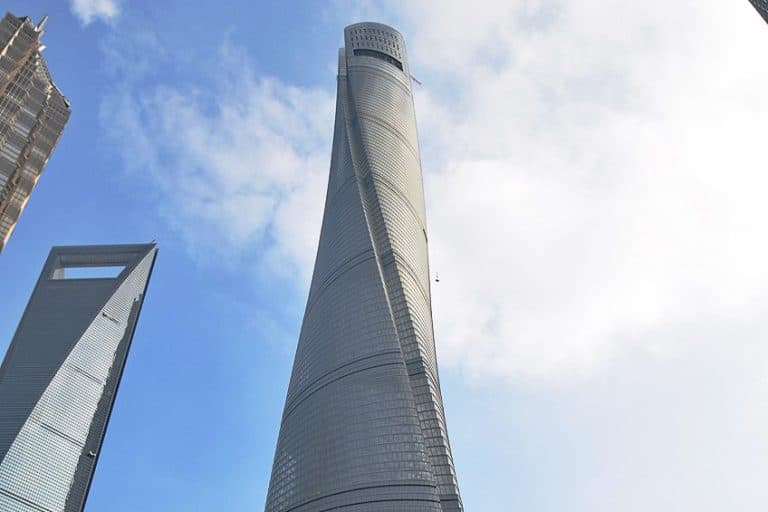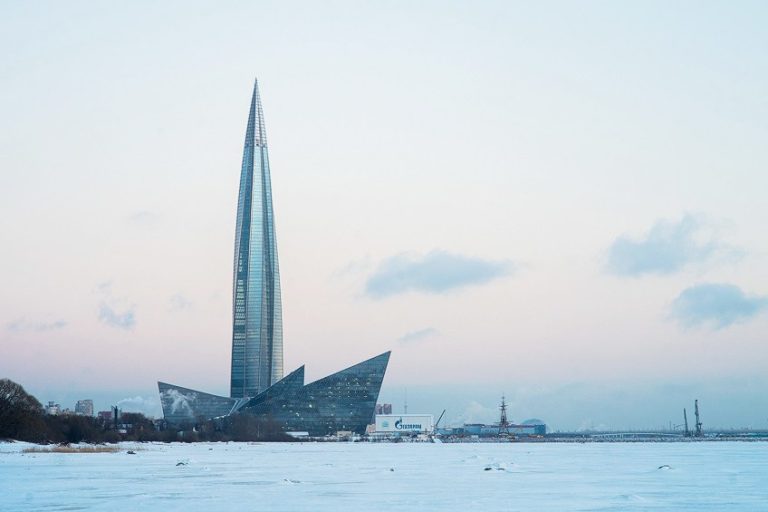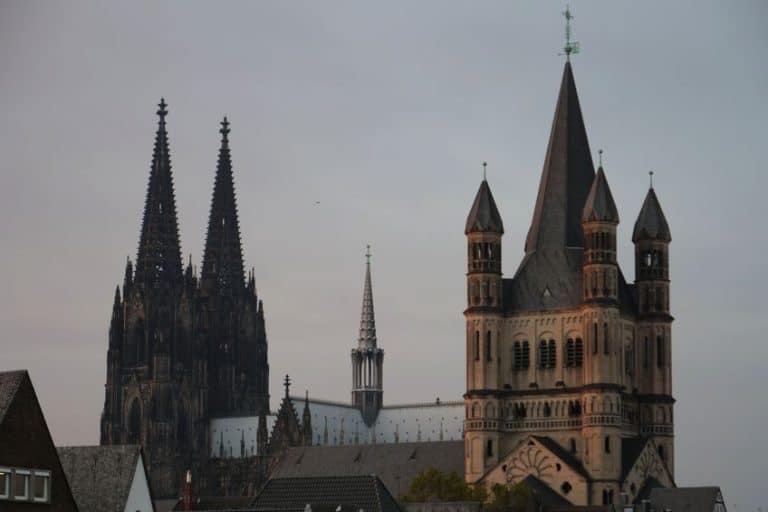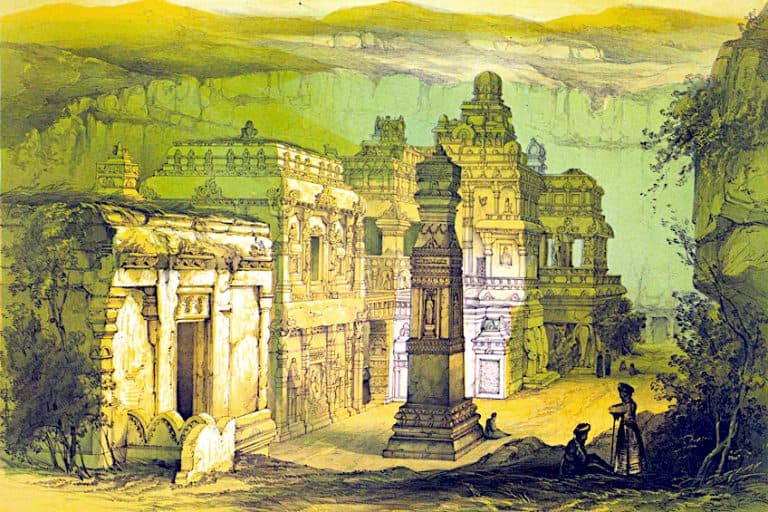Himeji Castle in Japan – A Look Inside Himeji Castle
Japan has a long history of amazing infrastructure and cultural influences that have shaped the region and other parts of the world as well. One of the more notable architectural characteristics of the region is its castles, typically built during the reign of the many dynasties that have ruled over the region in the past. One of the most beautiful and attention-grabbing of all these castles has to be the Himeji castle. Often regarded as one of the most beautiful castles in Japan, we thought we’d have a look at the Himeji castle, how it was made, where it is located, who built it, why it was built, and what it’s like today. That being said, let’s dive in!
What Is the Himeji Castle in Japan?
| Architect | Akamatsu Sadanori |
| Dimensions (m) | 31 x 140 x 125 |
| Date of Construction | 14th Century CE |
| Location | 68 Honmachi, Himeji, Hyogo 670-0012, Japan |
| Type of Architecture | Prototypical Japanese castle architecture |
| Purpose | Fort |
| Materials | Wood and stone |
The Himeji castle is a hilltop castle situated on a hilltop in Japan. This castle has been constructed in the prototypical Japanese castle architecture. The castle has come to be known colloquially as “Hakuro-jō or Shirasagi-jō”, which loosely translates to “White heron castle” in English. This nickname is due to the castle’s strikingly white exterior color, and the fact that it resembles a bird taking off.
The castle itself was initially constructed as a fort, hence its elevated position and numerous structural reinforcements. The fort was constructed in 1333 by one Akamatsu Norimura, a prominent Japanese Samurai, and at one point served as the Govender of the Hyogo province where the castle is situated.
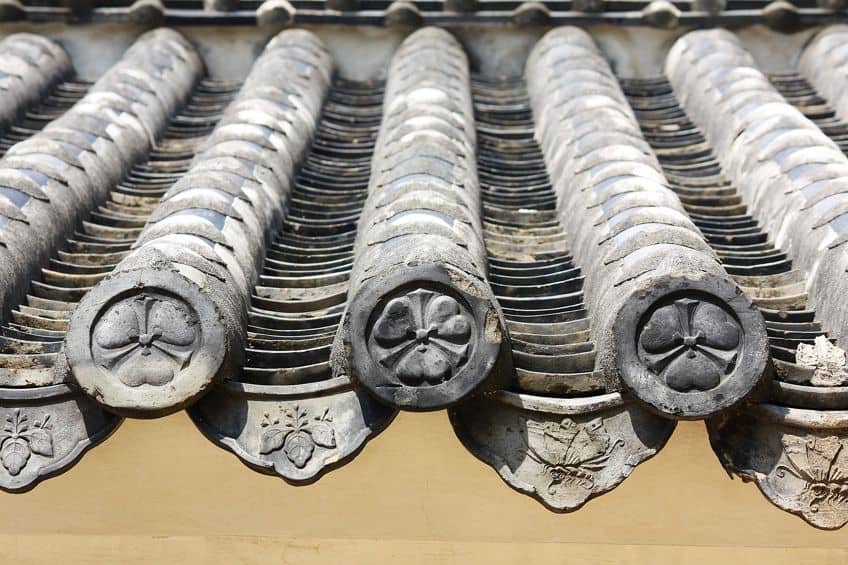
The fort would eventually be deconstructed and rebuilt into what was known then as the Himeyama Castle. This happened around 1346, but would not be the final incarnation of the structure by a long shot. The Himeyama Castle would last about 200 years in this form before it too would be demolished and rebuilt into what we know today as the Himeji castle in Japan.
At this stage, you might expect the renovations of the castle to be complete, but the exact opposite is true. In the year 1581, the castle would again be modified by one Toyotomi Hideyoshi, who saw fit to equip the castle with a keep. If you don’t know what a keep is, it’s essentially a fortified tower that stands smack bang in the middle of the castle walls. The castle would later be given to Ikeda Terumasa (the Shogun of Western Japan at the time) by Toyotomi Hideyoshi.
Terumasa would go on to make even more changes to the castle, essentially extending the grounds and fashioning walls around the perimeter, making it resemble its previous form as a fortress.
The castle was given to Ikeda Terumasa to thank him for his help in the battle of Sekigahara, and due to the sheer scale of the renovations that had taken place, all of the changes took around eight years to complete. Even once the exterior walls were constructed and the castle, there would continue to be renovations throughout the lifetime of the castle.
Between the years 1617 and 1618 Honda Tadamasa, a Japanese Daimyo (the equivalent of a feudal lord) would add even more buildings to the already massive castle structure. These would be the final renovations for a long time, as for the next 700 years or so the castle would remain almost completely intact, even though the bombing raids of World War 2 and natural disasters like the earthquake that took place in the region around 1995.
History of the Himeji Castle
Other than the countless renovations experienced by the castle over the years, it has also been involved in a number of historical events throughout its lifetime. Following the great Battle of Sekigahara, the castle was given to Tokugawa Ieyasu in the year 1600. As we mentioned previously, he made several renovations to the structure, the most notable of which is the Himeji structure with moats surrounding it.
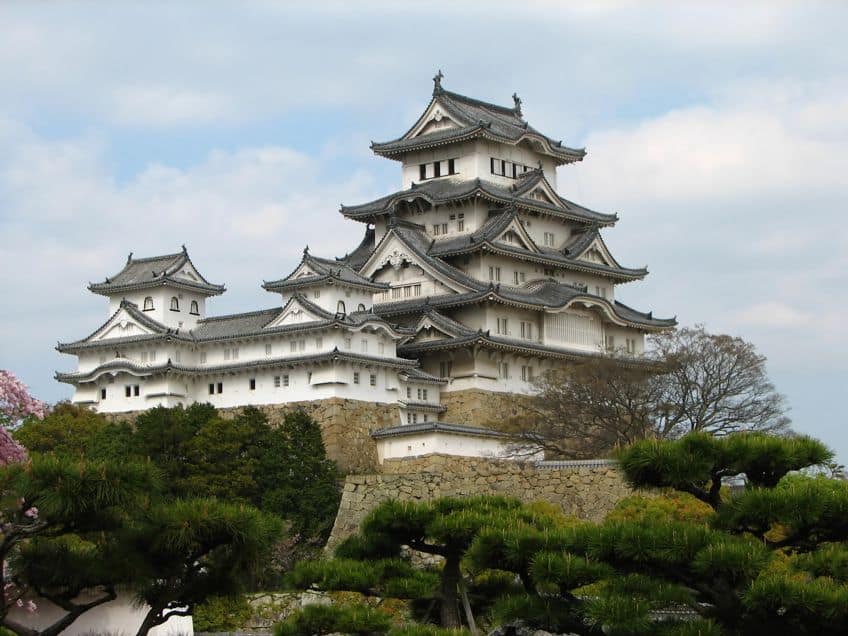
Leyasu would later pass away, and his heir passed away only three years later, leaving the castle to the next person in the line of succession, Honda Tadamasa. Tadamasa would go on to add one of the castle’s most iconic features, the world-renowned tower at its very center. This tower or “keep” as we referred to it previously, was created for his daughter princess Sen, who named it the “Dressing Tower” or keshō yagura.
Himeji Castle Description
The Himeji castle has often been described as the perfect example of prototypical Japanese architecture over the years, and it’s easy to see why. There is no other example of a structure like this that has been quite as well preserved, and as a result, there have been numerous research inquiries into its history and construction.
External Castle Grounds
The walls surrounding the castle are curved, almost resembling fans. This is likely to ensure the defensive capabilities of those inside, and their aesthetic appeal combined with their functionality is truly something to behold. The form of the castle was achieved by using a combination of wood and stone, common materials at the time of its construction.
The castle itself still resembles a fort thanks to its complex-like layout.
The entire property consists of about 83 separate structures including storage houses, turrets, and corridors. While all of the structures that form part of the castle complex are considered to be historical artifacts, only around 74 of them are considered to be Important Cultural Assets by the Japanese government.
The castle has 32 walls, 11 full-length corridors, 16 turrets, and 15 gates in total. The walls of the castle would have been its primary defensive measure at the time of its construction, and as a result, they are a whopping 85 ft high and surround the entirety of the castle complex. This would ensure complete safety while allowing one to view the exterior of the walls from the keep and various watchpoints.
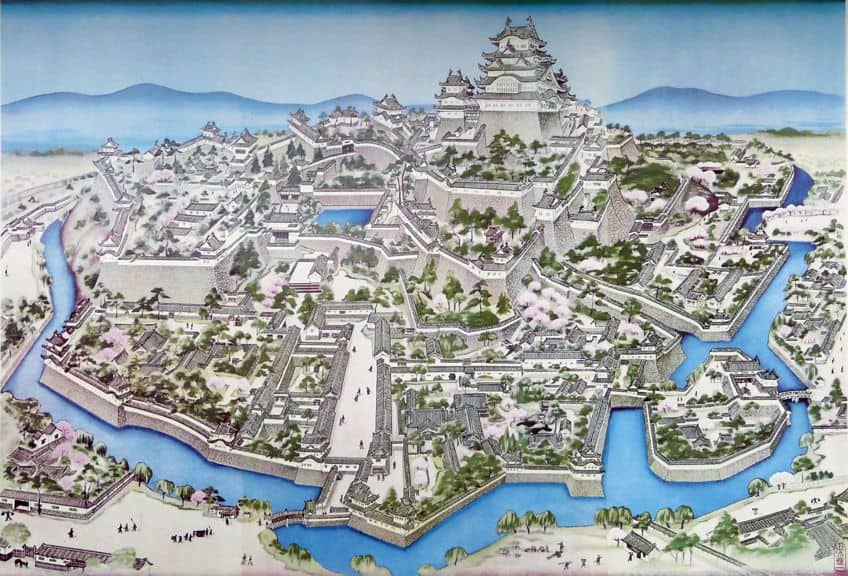
Constructing the Himeji castle with moats was likely a secondary defensive measure should the walls ever be breached, and the fact that they’re stunning to look at is probably a plus too. The complex grounds are huge, measuring 1,600 meters from East to West, and from North to South measuring around 1,700 meters. This absolutely massive property takes considerable manpower to maintain and restore over time.
The Main Keep
The main keep is the party piece of the entire structure, measuring around 46.4 meters in height, and is surrounded by smaller secondary keeps that form a sort of “keep cluster” in the center of the castle grounds. The Himeji castle interior consists mainly of the primary keep, which has around 6 floors including a basement, and has been noted as having advanced facilities such as indoor lavatories and even a kitchen hallway! The first floor of the primary keep has come to be known as the matt room, as there are over 330 different Tatami mats inside it.
The rest of the first floor is covered in a variety of other artifacts from various time periods, including weaponry mounted to the walls, which include dozens of guns and spears.
The second floor is much like the first, but the third and fourth floors are by far some of the more interesting of the keep. These two floors are equipped with what has come to be known as “stone throwing platforms, which are essentially lookout points where one can observe what is happening both in and outside of the castle grounds. They are also equipped with secret compartments where warriors would have been able to hide.

The fifth and sixth floors of the keep are essentially overlooking points. They offer a virtually unobstructed panoramic view of the castle grounds. They are the smallest of all the available floors measuring around 115 square meters, and the sixth floor is the only one that has iron bars attached to the windows, likely a safety precaution that was added toward the end of the feudal period.
Importance of the Himeji Castle
The Himeji castle is easily the largest castle structure in Japan, including all castles constructed in this early iteration of Japanese architecture. Due to its impressive size, state of preservation, and contribution to the understanding of Japanese culture and history, the Himeji castle was dubbed a UNESCO world heritage site in the year 1993.
Further titles have been bestowed on the castle of the years too. The “keep” located inside the interior moat of the castle has been dubbed a Special Historical Site by the Japanese government due to it holding significant cultural value to the Japanese people and the history of Japan as a whole.
There are further five structures that form part of the castle grounds that have been named national treasures by the local government as well.
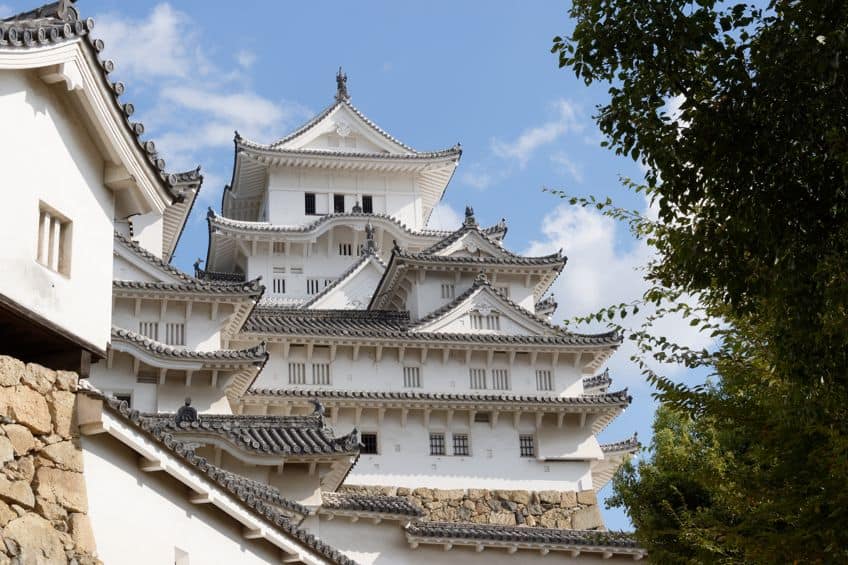
To ensure that the castle would last for centuries more, monumental efforts were undertaken to ensure that it would be in tip-top shape for public viewing. This process took place over a number of years, only ending in 2015 when the castle was finally open to the public as a sort of museum of national historic importance.
As we mentioned previously, the entirety of the castle’s exterior walls are a brilliant white in color. As you can imagine, it tends to get quite dirty over time, so the majority of the restorative efforts were dedicated to restoring and maintaining its pearly white color. This being said, the castle is of utmost importance and a location of national pride in Japan.
Demolition Attempts
In the 19th century, many Japanese castles were destroyed, but the Himeji castle survived the period thanks to some outside help. Some of the castle structures and corridors were destroyed in an effort to make room for army barracks, this was due to the castle being abandoned during this period, and it was eventually scheduled for complete demolition. However, through this incredible luck, this castle has been blessed with throughout its lifetime, an army colonel by the name of Nakamura Shigeto, who advocated for the castle to remain untouched throughout the war effort.
For his efforts in aid of the castle’s preservation, there would eventually be a monument of the colonel erected near the castle’s first gate in remembrance of his doings.
Despite this, there would be even more attempts to destroy the castle as the years went on. As we’re sure you know now, the Japanese socio-political landscape was a feudal one. However, this would soon come to an end, allowing people to own land instead of renting and/or providing a service in exchange for living there.

As a result, a Himeji resident purchased the castle for 23 Yen, which at the time would have translated to around $2000,00. The goal of the buyer was to have the castle demolished so that the land would become available for various applications. However, the cost of demolishing the castle proved to be too much, which meant the structure and property simply stood there as a result.
Attempted Firebombing
In a continuation of the castle’s incredible luck, it would go on to survive numerous bombardments during the Second World War. In one instance, a fire bomb was dropped on the top floor of the castle, which should have burned it down to the ground since it primarily consists of a wooden frame that has been added on to over the years.

However, the firebomb would fail to go off, resulting in the ordinance simply sitting there, and the damage to the section of the castle is repaired. The castle would go on to be entirely restored with efforts beginning in 1995 and costing in excess of 550 million Japanese Yen at the time, making it one of the most expensive and labor-intensive endeavors in Japanese history at the time.
Now that you know a little bit about the Himeji castle interior, the buildings surrounding the keeps on its interior, the elaborate history of the castle, who owned the castle throughout its history, and why it was built, it’s time for you to get out there and put your newfound knowledge to the test. We highly recommend visiting the Himeji castle should you have the opportunity, as well as some of the other wonderful attractions in the Himeji area.
Frequently Asked Questions
What Is Inside the Himeji Castle?
Wondering what is inside the Himeji castle? Well, the castle grounds are huge and have dozens of smaller buildings, like storage houses, to peruse. The main attraction of the castle would have to be its towers or keeps, which are open to viewing as well.
How Many Moats Are in the Himeji Castle?
The Himeji structure with moats and towers as we know it today was not constructed in this fashion initially. There are three moats located inside the castle grounds that were added by Ikeda Terumasa during a renovation process. The Himeji castle as we know it today would not have been possible without him, not to mention the reconstruction of the castle’s main keep.
Why Is the Himeji Castle So Famous?
The Himeji castle is considered to be a near-perfect example of prototypical Japanese architecture. Even though there are many castles in surrounding areas that are constructed in the same manner and style, the state of the preservation that the castle was found in and the efforts undertaken to maintain it has earned it the title of UNESCO world heritage site.
Justin van Huyssteen is a freelance writer, novelist, and academic originally from Cape Town, South Africa. At present, he has a bachelor’s degree in English and literary theory and an honor’s degree in literary theory. He is currently working towards his master’s degree in literary theory with a focus on animal studies, critical theory, and semiotics within literature. As a novelist and freelancer, he often writes under the pen name L.C. Lupus.
Justin’s preferred literary movements include modern and postmodern literature with literary fiction and genre fiction like sci-fi, post-apocalyptic, and horror being of particular interest. His academia extends to his interest in prose and narratology. He enjoys analyzing a variety of mediums through a literary lens, such as graphic novels, film, and video games.
Justin is working for artincontext.org as an author and content writer since 2022. He is responsible for all blog posts about architecture, literature and poetry.
Learn more about Justin van Huyssteen and the Art in Context Team.
Cite this Article
Justin, van Huyssteen, “Himeji Castle in Japan – A Look Inside Himeji Castle.” Art in Context. March 1, 2023. URL: https://artincontext.org/himeji-castle-in-japan/
van Huyssteen, J. (2023, 1 March). Himeji Castle in Japan – A Look Inside Himeji Castle. Art in Context. https://artincontext.org/himeji-castle-in-japan/
van Huyssteen, Justin. “Himeji Castle in Japan – A Look Inside Himeji Castle.” Art in Context, March 1, 2023. https://artincontext.org/himeji-castle-in-japan/.



